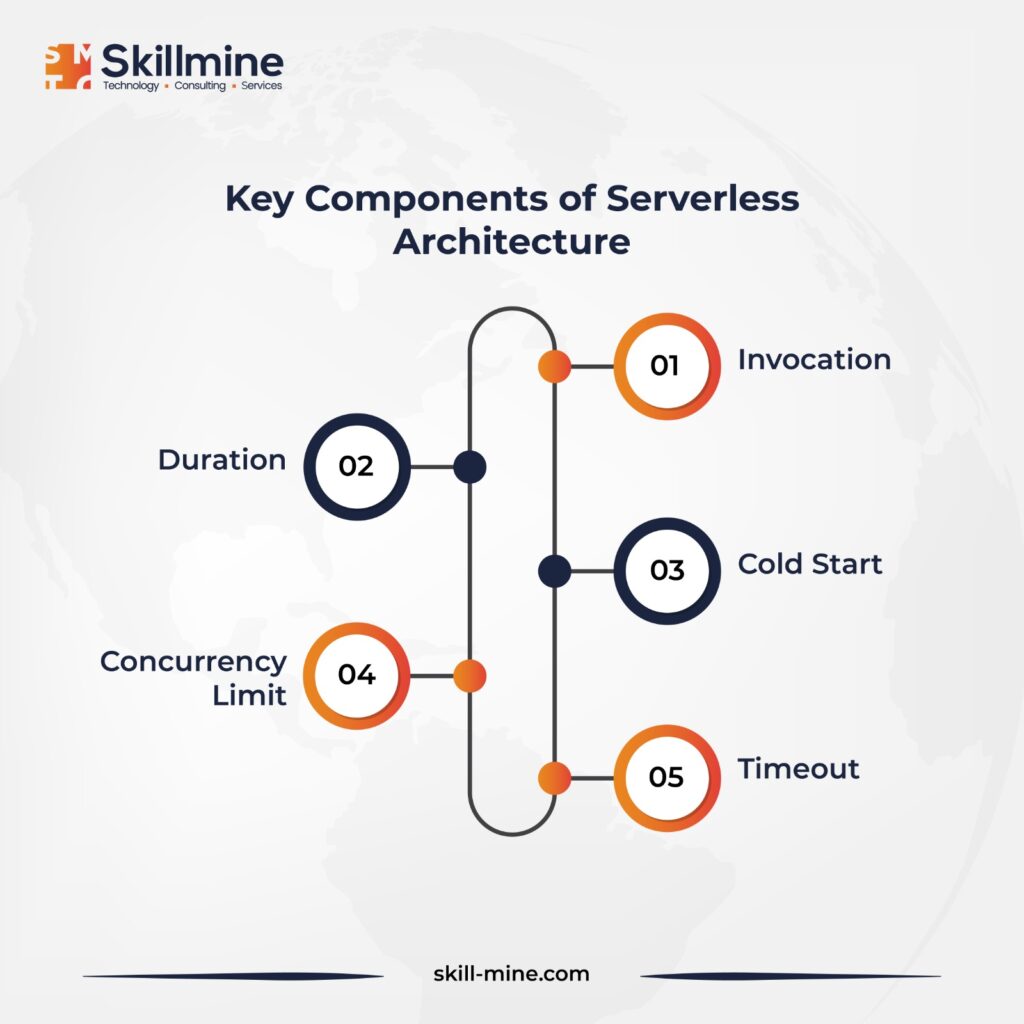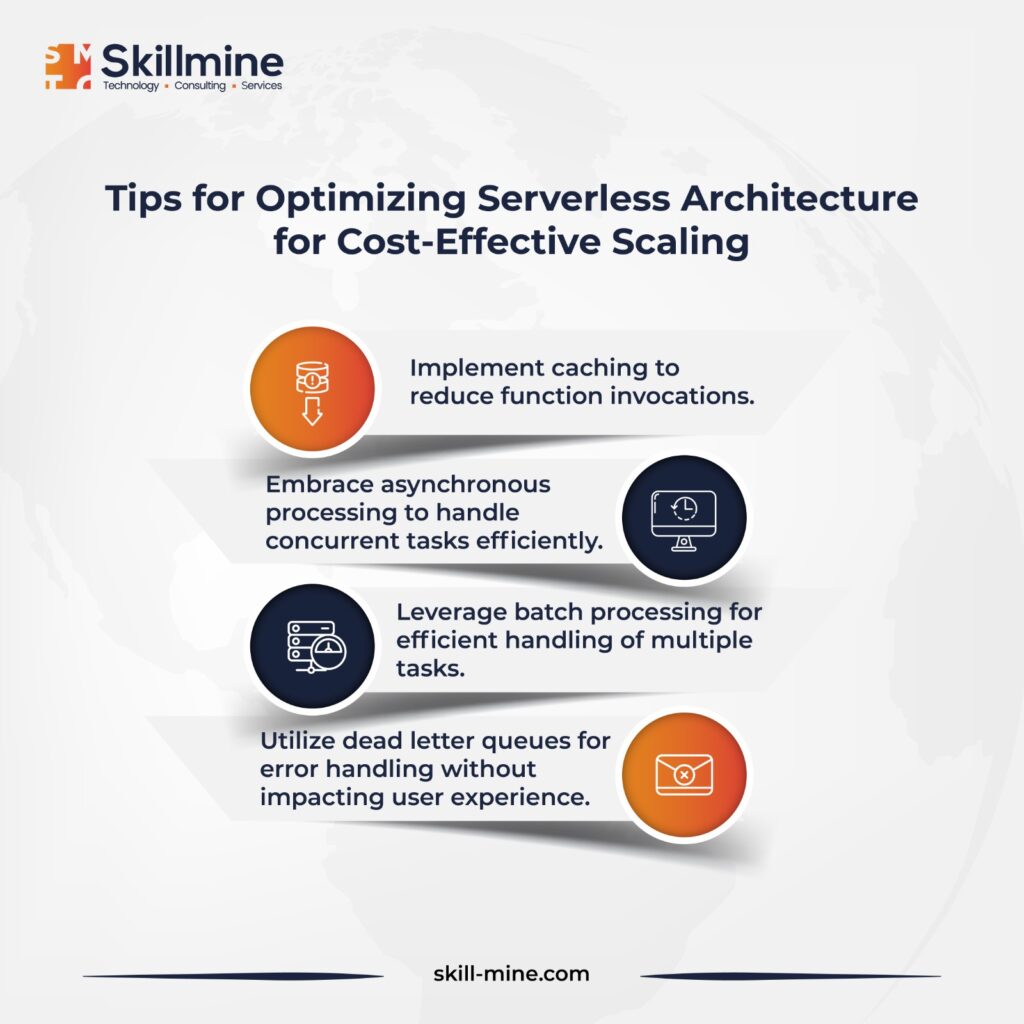Cloud migration services leverage serverless architecture as a fundamental component in transitioning applications and workloads to cloud environments. Serverless architecture helps businesses to streamline and optimize development processes. The serverless architecture market is projected to expand at over 25% from 2023 to 2032. This rise is expected to be greatly influenced by the adoption of DevOps.
What is Serverless Architecture?
Serverless Architecture, also referred to as Function as a Service (FaaS), revolutionizes cloud computing by shifting the burden of server management away from developers. Developers can solely focus on coding and refining application functionality. Within this architecture, cloud transformation solution providers handle server infrastructure, auto-scaling, and maintenance, liberating developers from the intricacies of infrastructure management. Functions within this framework are triggered by events, such as HTTP requests, database modifications, or file uploads, enabling precise task execution without the need for dedicated server provisioning.
Examples of Serverless Architecture
- Executing trigger-based actions or scheduled tasks, such as generating daily reports, performing backups, or implementing business logic.
- Developing RESTful APIs to support both web and mobile applications.
Conducting asynchronous processing tasks, like video transcoding.
Automating IT processes, including automatic access removal, initiating security compliance checks, or facilitating approval processes.
Streamlining continuous integration and continuous delivery (CI/CD) pipelines, where actions like code commits trigger builds or pull requests initiate automated testing.
Integrating seamlessly with third-party services and APIs.
Implementing real-time data processing for both structured and unstructured data streams.
How Serverless Architecture Works?
- Code Deployment: Developers write code containing behavioral logic for various functions.
- Event Triggers: User activities such as database modifications, file uploads, and HTTP requests serve as triggers for different functions.
- Function Invocation: Cloud providers’ event-driven architectures invoke functions in response to specific events.
- Isolated Execution: Functions execute interference-free within an environment provided by the cloud provider.
- Automatic Scaling: The total number of functions dynamically adjusts based on incoming workload fluctuations.
- Resource Allocation: Functions are executed with allocated resources like memory and central processing units (CPUs).
- Execution and Response: Data processing concludes, and responses are generated, along with interactions with services. Additional contextual information may be stored in serverless databases or caches during execution.
- Output: The final response to the request is shared with the initial invoker of the function.
- Resource Deallocation: Cloud service providers reclaim resources once the function’s execution is completed.

How Serverless Architecture Helps in Cost-effective Scaling
- Pay-as-you-go pricing: With serverless, you’re charged only for the resources your applications consume. This eliminates costs associated with idle server time, saving you money.
- Automatic scaling: Serverless platforms automatically adjust resources based on demand, avoiding the need for manual scaling and reducing the risk of over- or under-provisioning.
- Reduced operational overhead: Serverless platforms handle server infrastructure management, freeing developers to focus on application development and deployment.
How to design applications for cost-effective scaling with serverless architecture
- Choose the right serverless platform: Select a platform that aligns with your requirements and budget.
- Decompose applications into smaller functions: Break applications into smaller, independently invokable functions to enhance scalability and cost-effectiveness.
- Adopt event-driven architecture: Utilize event-driven design patterns to trigger functions in response to events, improving scalability and efficiency.
- Monitor usage and costs: Regularly monitor resource usage and costs to ensure efficient utilization of serverless resources.

Conclusion
Serverless computing represents a groundbreaking paradigm in cloud transformation services, seamlessly combining simplicity, scalability, and cost-effectiveness. Embracing this technology enables businesses to foster innovation and maintain a competitive edge in the dynamic realm of cloud computing. With expertise in deploying serverless solutions, Skillmine enables clients to harness the full potential of cloud computing. Through strategic implementation and tailored solutions, Skillmine drives innovation, enhances agility, and accelerates digital transformation for businesses across diverse sectors.
Looking for expert technology consulting services? Contact us today.





